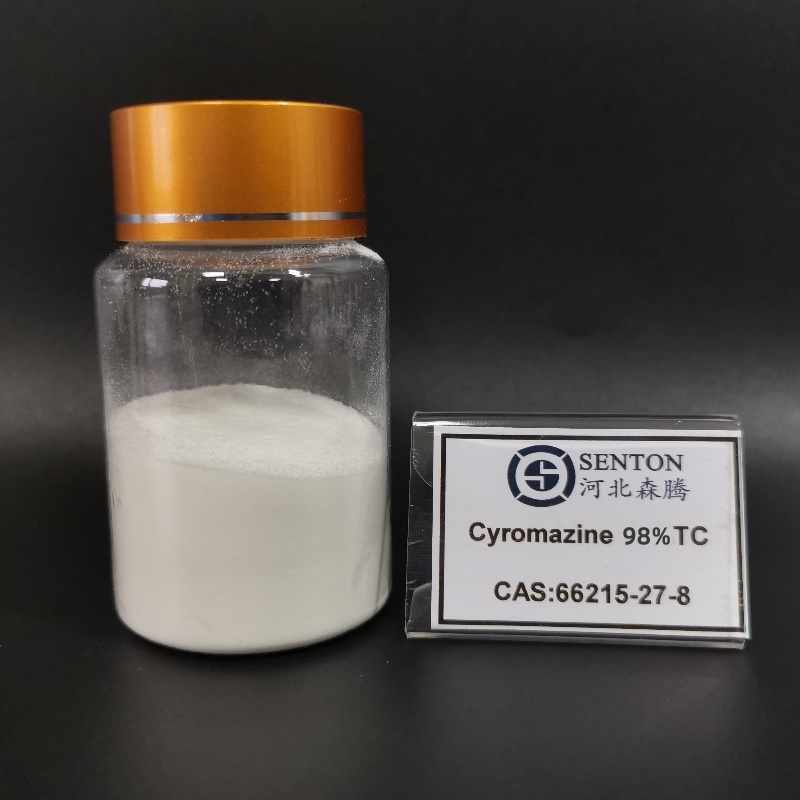Función e eficacia
Ciromazinaé un novo tipo deinsectoregulador de crecemento, que pode matar as larvas de insectos dípteros, especialmente algunhas larvas de mosca común (larvas) que se multiplican nas feces. A diferenza entre este e o insecticida xeral é que mata as larvas, mentres que o insecticida xeral só mata as moscas e é máis tóxico. O fármaco ten acción de toxicidade por contacto e estomacal, e ten unha forte condutividade de absorción interna, e a duración é longa, pero a velocidade de acción é lenta. A curto prazo, unha gran cantidade de exposición á micloramina pode irritar os ollos e a pel, e mesmo causar intoxicación aguda, o que resulta en náuseas, vómitos, vertixe e outros riscos para a saúde, e a inxestión a longo prazo ten efectos adversos para a saúde humana.
Acción farmacolóxica
Ciromazinaé un insecticida que pode inhibir a muda das larvas de dípteros, especialmente a primeira fase da muda, de xeito que se bloquea a reprodución de vermes e as larvas non poden morrer. Cando se administra internamente ás galiñas, os vermes poden ser eliminados por completo mesmo se a cantidade do fármaco nas feces é moi baixa. Cando a concentración de alimento alcanza 1 mg/kg, pode controlar o desenvolvemento da maioría dos vermes de moscas nas feces e, cando se alcanzan 5 mg/kg, é suficiente para controlar todo tipo de vermes de moscas. Xeralmente é eficaz de 6 a 24 horas despois do uso do fármaco e o efecto pode durar de 1 a 3 semanas.
A absorción deste produto é menor despois da administración interna de polos, e o principal metabolito no corpo é a melamina. Excrétase principalmente polas feces no prototipo. Debido á súa baixa solubilidade lipídica,Ciromazinararamente permanece nos tecidos. Non tivo ningún efecto no crecemento, na produción de ovos e no rendemento reprodutivo dos animais.
Data de publicación: 16 de abril de 2025




